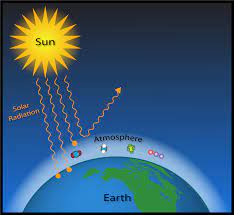Greenhouse Gas Emissions Training
On December 7, 2023, CALTAP piloted "GHG Emissions & Mitigations in Construction Projects", the second in a series of trainings from our Sustainable Engineering Training Academy (SETA). The SETA platform provides transportation and construction engineering communities with module-based training in the areas of green buildings, environmental impacts of construction and mitigations, and structural health monitoring systems.
Presented by lead SETA developer Dr. Hamid Rahai of CSULB's College of Engineering, GHG Emissions & Mitigations opened with a case study on road pavement and how the various materials and construction phases contribute to the project's overall carbon footprint (released CO2).
Dr Rahai followed-up by taking a close look at the contributors to construction GHG—including equipment types and the various gases released—and how the material makeup of a building contributes to ists overall "embodied energy", or the end-to-end energy content either consumed or trapped in its construction. Strategies to reduce a structure's embodied energy offer a key step towards acheiving sustainable construction.
Another key strategy is carbon sequestration, or the process of capturing and storing atmospheric CO2. Dr Rahai presented both biogenic and technological approaches that are available today and can be deployed as part of any construction project to help acheive carbon nuetrality. The class closed with a discussion on mitigation strategies and simple approaches to calculating project GHG contributors as a way of estimating construction carbon footprint.
Key Training Takeaways
- Embodied energy, the total amount of energy associated with the production of a structure, can be reduced through a variety of ways, such as using locally sourced, recycled, and/or low maintenance materials.
- Carbon sequestration, the process of capturing & storing atmospheric CO2, can be performed geologically by storing CO2 underground or biologically by storing CO2 in vegetation, soils, or aquatic environments.
- Proper equipment maintenance, reducing equipment idling, recycling, and using biofuels are some of the most effective strategies to reduce GHG emissions.
- The species of tree planted around a construction project can have a significant impact on the amount of atmospheric CO2 captured over time, a process of biogenisis.
Fugitive Dust Mitigation is the second in a series of SETA course modules,
subscribe to our weekly e-newsletter to find out more about new upcoming trainings!
Dr. Hamid Rahai
Dr. Hamid Rahai is founding director of the Center for Energy & Environmental Research & Services (CEERS) and a professor at CSULB’s Mechanical & Aerospace Engineering and Biomedical Engineering departments.
Dr. Rahai is owner/co-owner of several patents in wind energy, reducing ambient NOx of diesel and CNG engines, and reducing the drag of airfoils at subsonic and transonic speeds.
What are Greenhouse Gases?
GHGs are atmospheric gases that trap and radiate heat, contributing to a global "greenhouse effect".
Such gases include carbon dioxide (CO2), methane (CH4), nitrous oxide (N2O), which absorb infrared radiation, preventing some of the sun's energy from escaping back into space.
Activities like burning fossil fuels and deforestation have significantly increased the concentrations of these gases in our atmosphere, leading to an enhanced greenhouse effect and global warming.

-0.jpg)